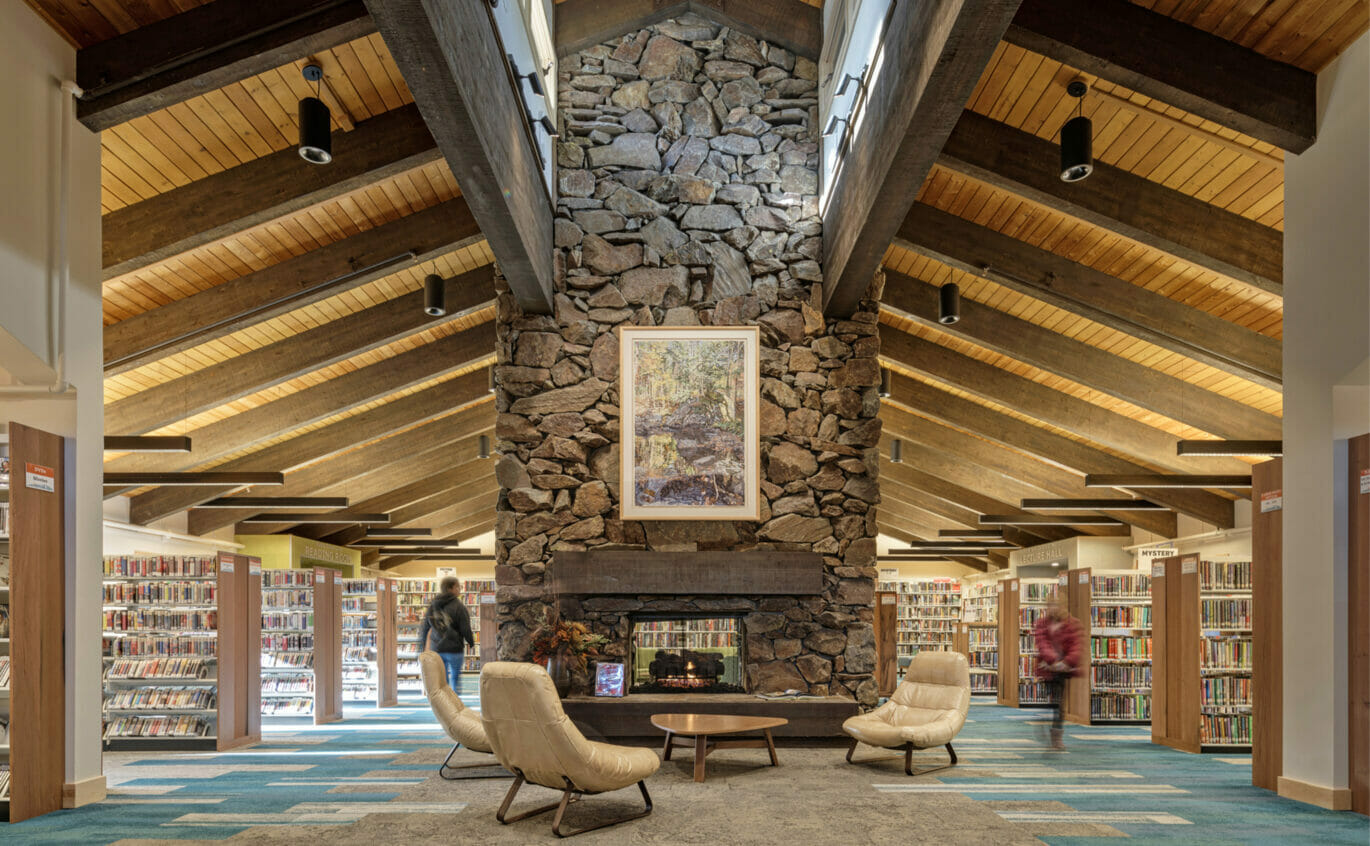Sawtooth National Recreation Area
Representatives from the SNRA will discuss their Outfitter and Guide Management Plan.
by kmerwin
Representatives from the SNRA will discuss their Outfitter and Guide Management Plan.
by kmerwin
Join us for a panel conversation on the history and future of the Sawtooth National Recreation Area (SNRA), 756,000 acres of central Idaho that includes the Sawtooth Wilderness, Cecil D. Andrus-White Clouds Wilderness, and the Hemingway-Boulders Wilderness areas. The SNRA was established on August 22, 1972, and we are taking this moment to recognize its impact on our community as we step into the next 50 years.
Panelists will include Kathryn Grohusky, Executive Director of the Sawtooth Society; Lin Gray, Executive Director of the Sawtooth Interpretive & Historical Association; Kirk Flannigan, Area Ranger at the SNRA Headquarters north of Ketchum; and Paul Ries, former SNRA Area Ranger.
This program will be outdoors. Bring a camp chair or blanket and join us! The event will also be livestreamed on Vimeo and available to view later. Click here to watch online.
by kmerwin
Buffy McDonald, Reference Librarian, recommends The Power of Habit by Charles Duhigg.
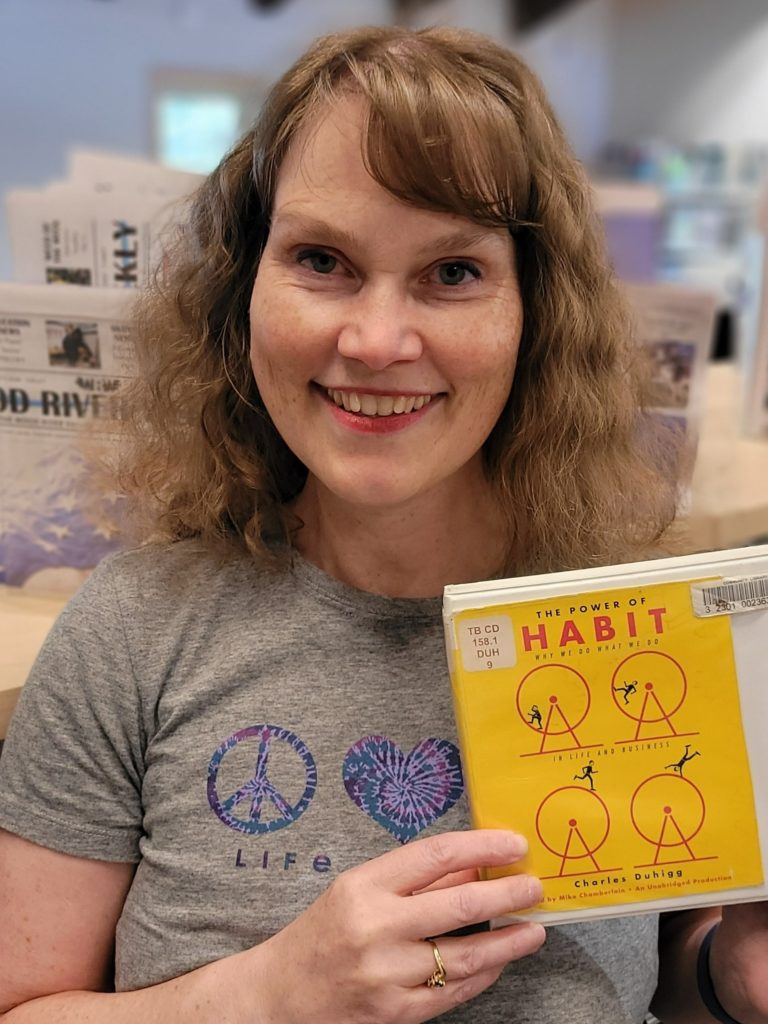
Have you ever wondered how habits are created? Well, Charles Duhigg has written a book that digs into the science behind how habits are formed. He describes the process with interesting and illuminating stories that help you to understand how habits work—both how to acquire new habits and how to eliminate old ones.
Over time our habits have an enormous impact on our health, productivity, financial security, and happiness. To begin to understand how new, life-enhancing habits are developed, it is important to know how a decision becomes an automatic behavior.
The Habit Loop:
New habits are formed by cultivating a craving that drives the habit loop. THIS IS VERY IMPORTANT!
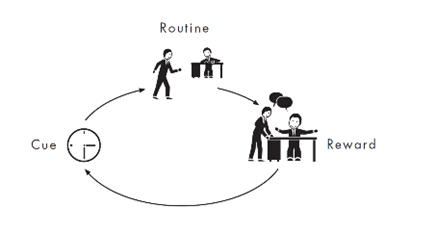
If you understand how habits work, you can then change existing habits or build new ones.
If you want to break the daily candy bar habit, for example, you’ll want to keep the reward, but change the routine.
This will take a little bit of planning on your part. Let’s say you stash an apple and some pretzels in your backpack.
So when the 3:00 p.m. “I’m hungry” cue happens, you’ll still get a yummy reward, but you’ll reach into your backpack for a healthy snack instead of automatically heading for the sugar-soaked vending machine.
Reading the book will help you better understand how this process works and help you to set better habits.
The Power of Habits is available in CD and eaudiobook.
To access the eaudiobook version, download the Libby app and start listening. If you need help doing this, let us know.
You can also get a good overview of the book in this audio interview with David Allen.
by kmerwin
The 2022 Community Speaker Series presented by The Community Library and the Sun Valley Writers’ Conference invites all to join for three free lectures in Ketchum’s Forest Service Park.
by kmerwin
Peter Matschek, Gold Mine Processing Associate, recommends The Alienist by Caleb Carr.
Note: The term “alienist” comes from the fact that, prior to the twentieth century, people who were mentally ill were considered to be “alienated” from society. Those who studied them were therefore called alienists. It was not a field that received a lot of support at that time.

The Alienist takes place in 1890s New York City in the slums. In some of the seediest establishments, there are children who dress up as women and prostitute themselves. And somebody is killing them.
Since the police at that time were heavily corrupt and couldn’t be trusted, the police commissioner (who was hired to clean up the corruption) put together a team to work outside the system. This team consisted of an investigative reporter who was familiar with the criminal underworld, a woman who was smart, ambitious, and hoping to advance beyond her present secretarial job, and an alienist who was brilliant but beyond arrogant. They had to work in secret locations in the evenings and weekends to avoid getting caught. They faced constant hostility from several sources, not the least being the police (since the police-being unable to locate the killer-felt threatened).
They started out with the alienist’s theory that peoples actions as adults are influenced (or dictated) by their life’s experiences as a child, which was a very controversial view at that time. They tried to get inside the mind of this evil person and answer the question: How could somebody do this to children and why? They brainstormed ideas and as the murders continued, they were able to create a plausible psychological profile of the killer. Then, through good old-fashioned detective work, they were able to pinpoint a likely suspect (after many failed attempts) with the hopes of catching him before he could kill again.
I liked this book since it is a classic detective story which focuses of the team’s investigation of the murders rather than focusing on the murderer himself (or herself). It does not describe the crime scenes, so we are spared the gory details of the murders, thank goodness. It’s also a period piece of 1890s New York, which was pretty interesting as well.
by kmerwin
Library Foyer Exhibit: July 2022 – January 2023
The Foyer of Community Library in Ketchum housed 21 exquisite art glass cylinders from renowned glass artist Dale Chihuly. With this extraordinary body of work, Chihuly aims to convey his appreciation and respect for the histories, cultures, and arts of the Indigenous tribes of North America, and to recognize the influence of Native cultures on contemporary arts.
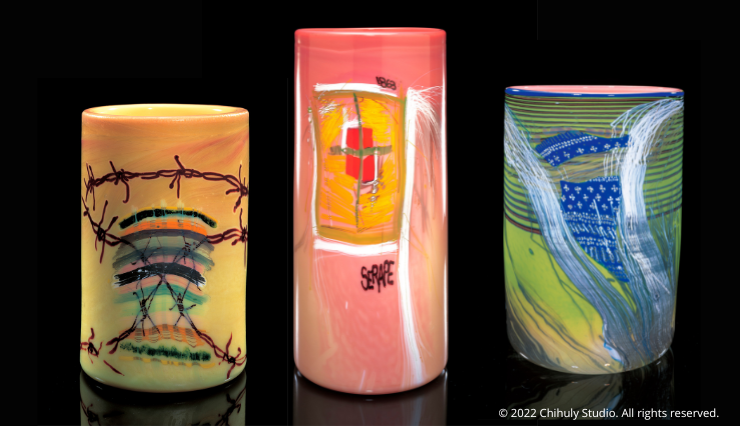
To develop his Blanket Cylinders, Chihuly researched blankets made by members of the Diné (Navajo) tribe after being exposed to rugs and blankets handloomed by Diné artists, which he saw while spending time in New Mexico in 1974. In this Cylinder series, Chihuly initially experimented with drawings on glass vessels, using what is known as a “pick-up” technique. Colorful glass threads were laid out in intricate designs inspired by the Navajo textiles, before being fused to the vessel in its molten state in a process informed by the artist’s background in weaving.
Glass and textiles have been intertwined for Chihuly since the beginning of his career. He was introduced to working with glass and natural fiber while studying interior design at the University of Washington, where are as a young artist, he literally wove the two mediums together in unexpected dialogue.
Chihuly’s experimentation with each during this time marks the beginning of his bold innovations in glassmaking:
My first serious use of glass was weaving small parts of it into tapestries. I did this quite seriously during my junior and senior years at the University of Washington in 1963-65. During this period, I studied all kinds of weaving and textiles and fell in love with Navajo blankets and Pendleton blankets. . .It was the beginning of my love of Native American design. ~Dale Chihuly
A decade later, Chihuly was drawn to Santa Fe, New Mexico. There, he helped build a glass hotshop for the Institute of American Indian Art, inaugurating the school’s glassmaking program. This proved to be a powerful synergy for the studio glass art movement, the contemporary Native art movement, and for Chihuly’s development as an artist.
Chihuly’s Inspirations
Like so many artists, Dale Chihuly draws inspiration from the world around him. Chihuly was born and raised in Tacoma, Washington and has spent much of his life immersed in the cultures and natural environs of Washington State. He has been inspired by the waters of Puget Sound, his mother’s gardens in Tacoma, and the art of dozens of Indigenous tribes, particularly those who reside along the Pacific Northwest Coast and in the Southwestern US, where he has spent time.
The exhibit will be on display in the Library’s foyer through January 2023. Exhibition Sponsored by Michael and Alexis Rowell.
In January 2023, the Library hosted “Clearly Indigenous: Native Visions Reimagined in Glass” with Dr. Letitia Chambers.”
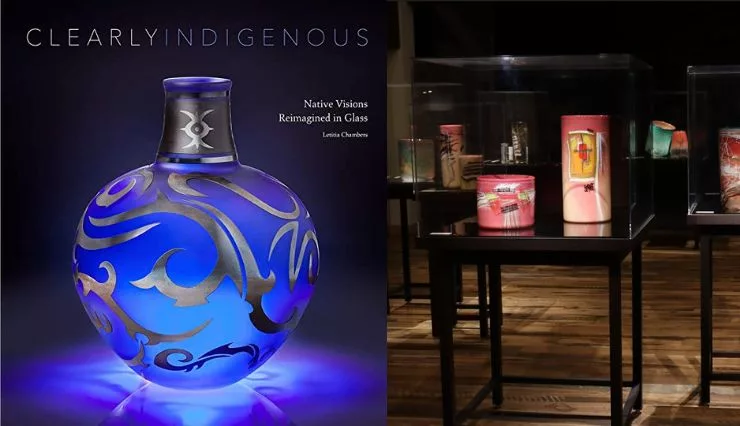
Dr. Letitia Chambers presented a program discussing glass art created by American Indian artists. Chambers is the curator of the exhibit Clearly Indigenous: Native Visions Reimagined in Glass, which is slated to travel to ten major museums around the U.S. over the next four years. She also authored the beautifully illustrated book of the same name, which is now in its third printing. The exhibit includes 120 glass art creations and tells the story of how glass art came to Indian Country.
Influenced by Native arts, leading glass artist Dale Chihuly created his first Native-inspired glassworks in 1975. He also created and taught a glass art curriculum to students at the Institute of American Indian Arts in Santa Fe. The reciprocal nature of this relationship led to the creation of an exceptional body of work over the past 50 years. Chihuly’s first Native-inspired works in glass incorporated glass threads fused onto the surface of blown cylinders to create designs based on patterns in Navajo weaving. Chihuly art currently on exhibition at The Community Library features a series of these blown glass cylinders.
The glass art created by American Indian artists not only is a personal expression of each artist but also is imbued with their cultural heritage. Whether reinterpreting traditional stories and designs in the medium of glass or expressing contemporary issues affecting tribal societies, Native glass artists have created a content-laden body of work. These artists have melded the aesthetics and properties inherent in glass art with their cultural ways of knowing. The result is a stunning collection of artworks. Dr. Chambers’ presentation on Native glass art will include slides with images from the book she authored, Clearly Indigenous: Native Visions Reimagined in Glass, as well as from the exhibit of the same name.
The program was livestreamed and is available to view here: Click here to watch online.
Dr. Letitia Chambers is a former chief executive officer of the Heard Museum in Phoenix, AZ. In positions in government, Dr. Chambers served as Staff Director of two U.S. Senate Committees and as U.S. Ambassador to the United Nations General Assembly. She also headed the state system of higher education in New Mexico. Her private sector experience includes serving for twenty years as President of a Washington, DC, based public policy consulting firm. Dr. Chambers retired from the Heard Museum in 2012 and now lives in Santa Fe, NM, where she maintains a part-time consulting practice. She has served on over 25 boards of directors over her career, including the Vermont College of Fine Arts, the Institute of American Indian Arts in Santa Fe, the Adams National Bank in Washington DC, Board Chair of the Santa Fe Botanical Garden, and Board Chair of the National Association of Tribal Archives, Libraries, and Museums.
